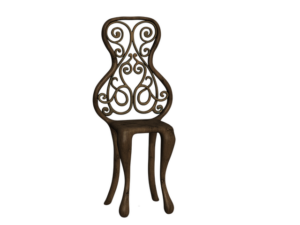furniture upholsterers
Introduction
Furniture-upholsterers have been an integral part of the design and manufacturing process for centuries, transforming raw materials into functional and aesthetically pleasing pieces that bring comfort and style to our daily lives. This article will delve into the world of furniture-upholsterers, exploring their significance, historical context, and global impact.
Understanding Furniture-Upholsterers
Furniture-upholsterers are skilled artisans who specialize in transforming fabric, leather, or other materials into upholstered pieces that enhance the functionality and beauty of furniture. This ancient craft has evolved over time, influenced by technological advancements, cultural exchange, and shifting consumer preferences. The core components of furniture-upholstery include:
- Fabric selection and cutting
- Pattern making and stitching
- Upholstery design and construction
- Finishing touches (e.g., buttoning, piping)
Global Impact and Trends
The global furniture market is projected to reach $1.3 trillion by 2025, driven by increasing demand for sustainable, eco-friendly, and high-quality products. Furniture-upholsterers play a crucial role in this industry, with key trends shaping their trajectory:
- Sustainable materials and practices
- Customization and bespoke designs
- Digital printing and textile innovations
- Global supply chain management
Regional variations include:
- Europe: Emphasis on craftsmanship, luxury, and sustainability
- North America: Focus on mass production, affordability, and technology
- Asia: Rapid growth driven by increasing consumer demand and urbanization
Economic Considerations
Furniture-upholsterers operate within a complex economic framework, influenced by market dynamics, investment patterns, and government policies. Key factors include:
- Supply chain management: Sourcing materials, labor costs, and transportation networks
- Production costs: Labor, materials, and manufacturing processes
- Market demand: Consumer preferences, trends, and competition
Technological Advancements
Significant technological advancements have transformed the furniture-upholstery industry:
- Digital printing: Customized designs and patterns on fabric and leather
- 3D modeling and simulation: Improved design and prototyping
- Automation and robotics: Increased efficiency and reduced labor costs
- Virtual reality (VR) and augmented reality (AR): Enhanced product visualization and experience
Policy and Regulation
Governments worldwide have implemented policies and regulations to govern the furniture-upholstery industry:
- Environmental regulations: Waste management, recycling, and sustainability standards
- Labor laws: Minimum wage, working hours, and workplace safety
- Trade agreements: Tariffs, quotas, and intellectual property protection
- Quality control measures: Testing and certification for materials and products
Challenges and Criticisms
Furniture-upholsterers face various challenges and criticisms:
- Sustainability concerns: Environmental impact, waste management, and social responsibility
- Labor exploitation: Poor working conditions, low wages, and child labor
- Competition from mass-produced products
- Limited skills training and education
Strategies to overcome these issues include:
- Investing in sustainable materials and practices
- Promoting fair labor standards and worker rights
- Fostering innovation and design excellence
- Enhancing education and training programs
Case Studies
Three successful case studies exemplify the impact of furniture-upholsterers on the industry:
- Eames’ Eureka Chair: Charles and Ray Eames’ iconic chair design, featuring a molded plywood shell and upholstered cushions, revolutionized post-war furniture design.
- Herman Miller’s Noguchi Coffee Table: Isamu Noguchi’s innovative coffee table design combined simplicity, functionality, and beauty, influencing modern furniture design.
- IKEA’s Flat-Pack Furniture: IKEA’s flat-pack concept enabled mass production, affordability, and eco-friendly packaging, disrupting traditional furniture manufacturing.
Future Prospects
Furniture-upholsterers will continue to evolve, driven by technological advancements, changing consumer preferences, and shifting global trends:
- Increased focus on sustainability, customization, and digital printing
- Growing demand for luxury, high-quality products
- Emerging markets in Asia and Latin America
- Strategic partnerships between manufacturers, designers, and suppliers
Conclusion
Furniture-upholsterers have come a long way from their ancient roots, transforming into a dynamic industry shaped by technological advancements, global trends, and economic considerations. As the industry continues to evolve, it is essential to address sustainability concerns, labor exploitation, and competition while fostering innovation, education, and strategic partnerships.
FAQ Section
- What is furniture-upholstery?
Furniture-upholstery is the process of transforming fabric, leather, or other materials into functional and aesthetically pleasing pieces that enhance the functionality and beauty of furniture. - How has technology impacted furniture-upholstery?
Technological advancements have transformed the industry, enabling digital printing, 3D modeling, automation, and virtual reality (VR) and augmented reality (AR) applications. - What are the most significant challenges facing furniture-upholsterers today?
Sustainability concerns, labor exploitation, competition from mass-produced products, and limited skills training and education are some of the key challenges faced by furniture-upholsterers. - How can I get involved in the industry?
Consider pursuing a degree or certification in furniture design, upholstery, or related fields. Research companies and organizations that align with your values and goals, and network with professionals in the industry.
By understanding the intricacies of the furniture-upholstery industry, we can appreciate the craftsmanship, creativity, and innovation that go into creating functional and beautiful pieces that bring joy to our daily lives.

Reviving Charm: A Practical Guide for Vintage Furniture Upholstery
Furniture upholsterers specializing in vintage restoration must harmoniously blend historical preservation with modern functionality. Their expertise lies in assessing each…

Tailoring Dream Spaces: A Guide to Personalized Upholstery with Expert Furniture Upholsterers
A furniture upholsterer is an integral part of personalizing your living spaces with custom-tailored furniture that aligns with both your…

Harmonizing Fabrics: Mastering Color and Pattern with Expert Upholsterer Tips
A furniture upholsterer's role is multifaceted, involving a sophisticated understanding of color theory and its psychological impact to create visually…

Restoring Pet-Damaged Furniture: A Fabric Repair Guide for Homeowners
When pets interact with furniture, it can result in a spectrum of damage from minor scratches and stains to significant…

Revitalize Your Home’s Look: A Guide to Fabric Refresh with a Professional Furniture Upholsterer
A furniture upholsterer is indispensable for rejuvenating worn-out furniture, transforming aged pieces into like-new items that blend beauty with durability.…

Mastering Tufting and Button Replacement for Upholsterers
A furniture upholsterer's expertise lies in the intricate art of tufting and buttonwork, which are essential for crafting durable and…

Motion Furniture Repair & Maintenance: A Comprehensive Guide for Furniture Upholsterers
A furniture upholsterer specializing in recliners and motion furniture must possess a deep understanding of both the mechanical and soft…

Reviving Timeless Elegance: Masterful Vintage Furniture Restoration by Expert Upholsterers
A furniture upholsterer skilled in vintage restoration balances historical integrity with modern functionality, ensuring antique pieces retain their charm and…

Mastering Color and Pattern: A Furniture Upholsterer’s Guide to Cohesive Home Design
A skilled furniture upholsterer employs advanced knowledge of color theory and pattern mixing to create interior designs that are both…

Reviving Your Seats: A Professional’s Guide to Cushion and Frame Repair for Optimal Support
A furniture upholsterer is crucial for maintaining and restoring the comfort and structural integrity of your furnishings. Their expert skills…